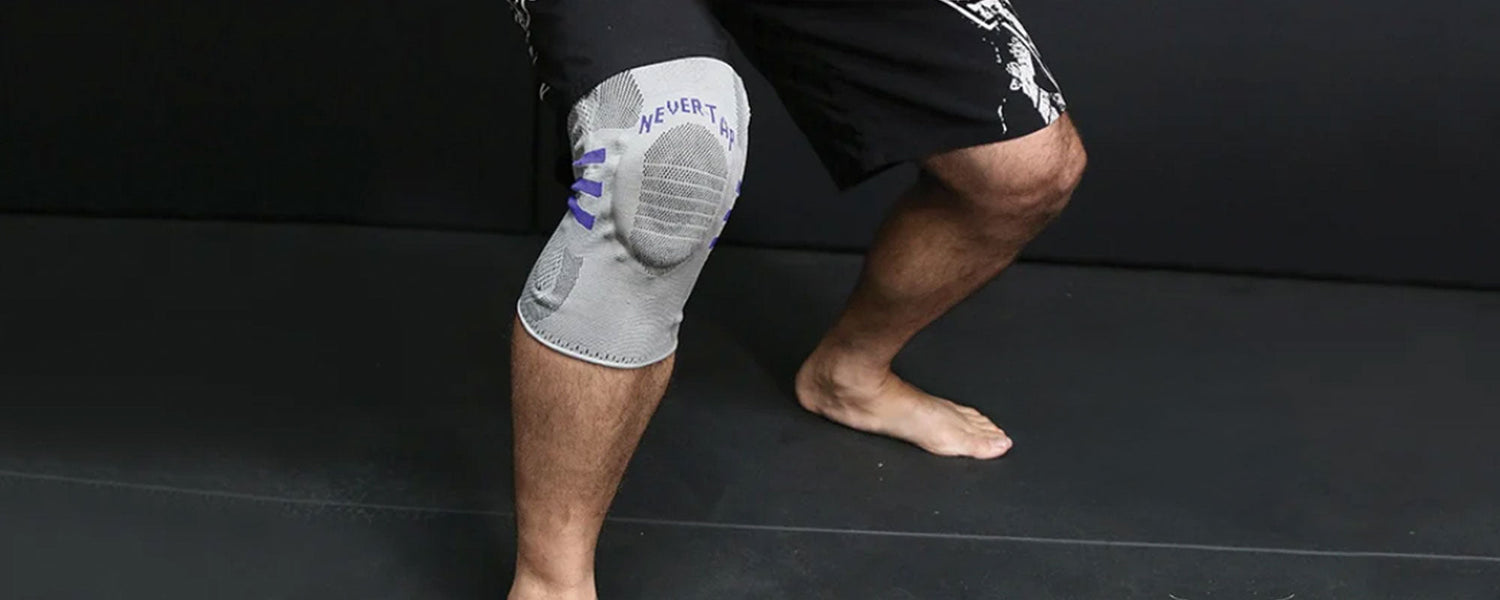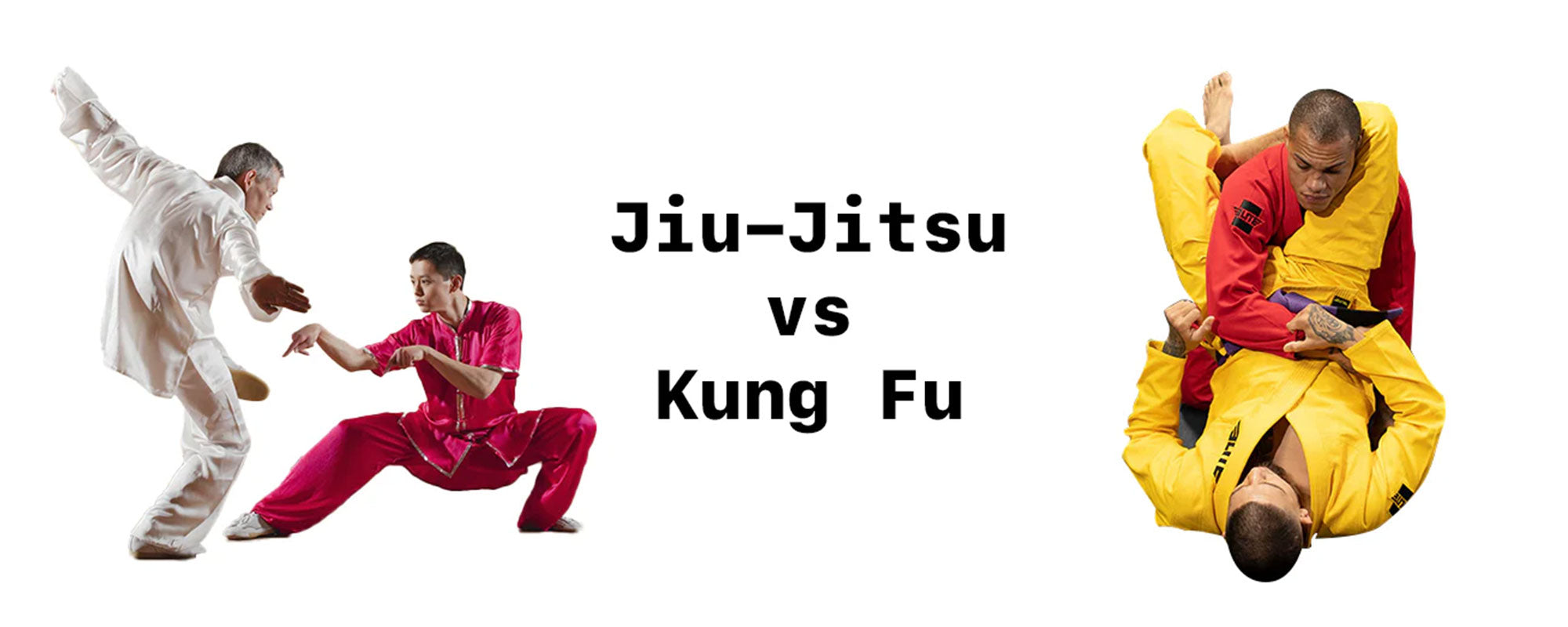Table of content
1. What Causes BJJ Knee Injuries?
The most common injuries among BJJ fighters are knee, shoulder, and wrist injuries. A Brazilian Jiu-Jitsu fighter can suffer many injuries which can impede performance. A knee injury is one of the worst injuries. It can cause a lifetime of problems or keep you from participating in sports for your entire life. Most knee injuries occur during BJJ training when rolling or sparring.
Much like with any sport, BJJ comes with its own risks. The knee is the most valuable part of your body when executing techniques. But intense leg locks, submissions, leg entanglements, and long heel hooks can result in a BJJ practitioner suffering from knee pain. Most people tore their medial collateral ligament (MCL) during BJJ training, which caused the edge of the knee to feel swollen. If you put pressure on your leg and take a step, you may feel a jolt of pain in your knee. You can prevent knee injuries in BJJ by doing flexible hip motions in the lasso guard position. Hip muscles play a crucial role in transitioning between positions. However, excessive pressure and motion on your hip while in a guard position can cause a knee injury.
2. Steps to Return to BJJ After A Knee Injury
A knee injury may require you to put your BJJ training on hold for quite some time. It can feel unfair and frustrating to waste so much time, but you need the necessary time to fully recover. The road to recovery might be tough but once you get there, you will find yourself gaining strengths in ways you might have never imagined. Here are eight steps that will help you get back on track after suffering a knee injury in BJJ.
2.1. Go to a Specialist
After you suffer a knee injury, you should get professional help and a proper diagnosis as soon as possible. Do not visit a normal doctor for a diagnosis of the knee injury, rather you should visit a specialist whose expertise is in dealing with injuries caused by intensive exercises.
Following your doctor's advice will ensure the recovery of your knee. Specialist doctors know more about the anatomy of the knee and can offer more reliable advice than other doctors. After receiving proper medication for your injury, you still have to wait for your knee to regain its strength. Physical therapy can have you do low-intensity exercises to help you regain your strength and speed up the recovery process. It is recommended you start with basic leg strength exercises before proceeding with the directions provided by a physical therapist.
2.2. Get A Knee Brace
Even after a knee injury has almost fully healed, there is a risk of your knee being damaged further without the help of a knee brace. To prevent reinjury, a knee brace helps protect and support certain parts of your knee to prevent unnecessary strain and aid in your recovery. If you’re unsure or don’t know much about knee braces, please consult your doctor about your knee pain or injury before getting one.
There are different types of braces with varying levels of effectiveness and deal with specific knee injuries:
- Primary braces: Primary knee braces are more reliable and flexible for minor knee injuries. For example, primary braces are best for minor aches, sprains, and joint inflammation.
- Advanced braces: Advanced knee braces or level 2 braces are more flexible and offer greater protection than primary braces. For example, advanced braces are best for moderate sprains, ligament weakness, and chronic joint inflammation.
- Maximum braces: Maximum braces are the most restrictive and provide maximum support for the knee joint. Generally, these braces are built with metal hinges, Making them best suited for post-surgical joints, prophylactic joint protection, and severe knee injuries.
2.3. Rehabilitation And Balanced Work
Knee rehabilitation and a balanced workout are crucial for your knee injury to fully recover while under the supervision of a doctor. After an injury or surgery, the next step is to undergo a rehabilitation and conditioning program that includes recreational activities. When the pain in your knee has lessened, you can do some balance workouts to help strengthen your leg and knee. Follow your physiotherapist's instructions and start doing a rehabilitation workout for a few minutes. Gradually increase the time of your rehabilitation workout as you recover more and more.
These exercises listed below are safe to do when you are currently suffering from knee pain and want to speed up your recovery.
Leg Stretch
Leg stretches help with rehabilitating your knee and requires no equipment.
How to do:
- Straighten your legs while you sit on the ground.
- Move your legs over the floor while you bend each leg up towards your chest. And switch positions steadily till you see the strain in your leg muscles.
- Wait for five seconds, then repeat.
- For each leg, repeat this exercise 10 times then rest for five minutes.
Heel Cord Stretch
The heel cord stretch consists of two different muscles: the gastrocnemius and the soleus. The heel cord stretch strengthens leg muscles, increases flexibility, and improves blood circulation to the muscles.
How to do:
- Stand with your uninjured leg bent slightly against the wall.
- With your injured leg behind you, stand upright on a flat heel.
- As you press your buttocks against the wall, keep your hands firmly planted.
- Hold for 30 seconds, then take 30 seconds to rest.
- Practice this exercise for three sets daily.
Standing Quadriceps Stretch
The standup quad stretches to focus on working the thigh muscles. If you frequently experience knee pain, try performing this exercise while lying on your sides.
How to do:
- For stability, stand against the wall.
- While holding onto your foot, move your heel towards your hips.
- Lift the foot slowly.
- Stay in this posture for 50 seconds, followed by 30 seconds of rest.
- Apply the same procedure to the other leg.
2.4. Do Drills
Drills focus on repeating a single technique, movement, or position multiple times. The objective of doing drills is to build and improve muscle memory.
“I fear not the man who has practiced a thousand kicks, I fear the man who has practiced one kick a thousand times.”
After your knee injury has fully recovered, you will need to practice BJJ drills as guards and mounts escape. Wear proper knee protection while practicing BJJ techniques on the mats. Try to wear knee braces whenever possible. Light drilling is beneficial because it strengthens your muscles and improves muscle memory.
2.5. Try to Keep Your Hip Flexible
The hip joints are surrounded by over 15 muscles that work together to provide a full range of motion. Hip flexibility strengthens the limbs, allowing them to handle more weight and exert more force. Swimming, sprinting, and jumping rope can improve your hip’s flexibility. Lack of hip flexibility increases the likelihood of injury during weight lifting. By having the knee and hip joints work together, they give your hips a wider range of motion and cause less pain in your knee. Leg muscles and flexors help to release tension and are involved with hip movement. If you are suffering from a knee injury, you should sit or lay down so you can rest. Try doing stretching exercises as they are a safe and easy way to release tension.
2.6. Half Guard Positional Training
Roberto “Gordo” Correa was a BJJ black belt who transformed the half guard pass into an offensive position. After suffering a knee injury, he realized that the full guard position caused pain in the knee. He started practicing the half guard position, becoming proficient in the side and guard positions. This practice helped Correa prevent his opponents from escaping, winning him many victories. Shortly other grapplers learned about Correa’s technique and started practicing half guards, sweeps, submissions, and positional variation in BJJ and other grappling sports. It is highly recommended you practice the half guard position if you are recovering and want to come back to BJJ to keep your skills sharp.
2.7. Moderate Positional Sparring
When you return to your BJJ training, make sure you don’t overexert yourself to the point where your knee injury worsens. As you come back on the mats, avoid rolling or sparring for at least two weeks. You still need to take care of your knee before you completely return. After at least two weeks, you can spar so long as there is no discomfort at the knee. If you manage to spar without any issues, then you can move on to rolling practice. Make sure you wear a primary knee brace while sparring.
2.8. Regular Training and Avoid Dangerous Partners
When you feel it is time to come back onto the mats, make sure that you do not select a new or aggressive training partner. You should choose a partner that you are familiar with, who lets you move freely, and is careful to not harm your knee injury.
With a reliable training partner, you can train regularly at a slow and comfortable pace.
3. Symptoms After Knee Injury
After suffering a knee injury, BJJ practitioners may feel painful shocks in the knee joint. It is recommended you stop practicing and recover fully to prevent further injury. You should practice basic movements before coming back to BJJ. If you feel no pain while doing simple movements, then you should be able to come back onto the mat. Otherwise, you will need to wait and get a knee evaluation. Symptoms after your knee injury recovers should include the following:
- No obvious signs of swelling around the knee.
- Full range of motion without any pain in the knee.
- There is no instability in the knee joint, standing on BJJ mats does not cause any pain.
- No neurological symptoms like numbness or tingling in the knee are present.
4. Bottom Line
In BJJ, your objective after sustaining an injury is to fully recover before getting back on the mat. Be wary when returning to BJJ after an injury. Train with constant concentration and the utmost care, avoid heavy exertion, and pick reliable training companions. Make the required lifestyle changes so you can spend more time on the mats, prevent more injuries, and continue achieving your goals in BJJ.
Photo Credit: @bjj-world












Leave a comment
This site is protected by hCaptcha and the hCaptcha Privacy Policy and Terms of Service apply.